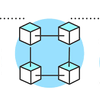Server-Side Rendering vs. Client-Side Rendering: Understanding the Differences
Server-Side Rendering vs. Client-Side Rendering: Understanding the Differences
Web development has come a long way since the early days of the internet, and one of the biggest advancements has been the development of server-side and client-side rendering. Both of these methods are used to display content on the web, but there are some significant differences between them. In this article, we will explore what server-side rendering and client-side rendering are and their differences.
What is Server-Side Rendering?
Server-side rendering (SSR) is the traditional method of rendering web pages. When a user requests a page, the server generates the HTML, CSS, and JavaScript for that page and sends it to the user's browser. The browser then displays the content to the user. The server generates a new page for every request, which can slow down the website's performance, especially during high traffic.
What is Client-Side Rendering?
Client-side rendering (CSR) is a more modern method of rendering web pages. When a user requests a page, the server sends a minimal HTML, CSS, and JavaScript file to the user's browser. The browser then executes the JavaScript, which generates the HTML and displays the content. The server only needs to send data to the browser, which reduces the amount of data that needs to be transmitted and can speed up the website's performance.
The Differences Between Server-Side Rendering and Client-Side Rendering
The primary difference between server-side rendering and client-side rendering is where the rendering happens. In server-side rendering, the rendering happens on the server, and the server generates a new page for every request. In client-side rendering, the rendering happens on the user's browser, and the server only needs to send data to the browser.
Another significant difference between the two methods is how they handle search engine optimization (SEO). Because server-side rendering generates a new page for every request, it is easier for search engines to crawl and index the website's pages. In contrast, client-side rendering can be more difficult for search engines to crawl and index because the content is generated dynamically.
Conclusion and Outlook
In conclusion, both server-side rendering and client-side rendering have their advantages and disadvantages. Server-side rendering is better for SEO and is more traditional, while client-side rendering can speed up a website's performance. The choice between the two methods ultimately depends on the website's specific needs.
Looking forward, the trend in web development is towards more dynamic, interactive web applications, which rely heavily on client-side rendering. As the capabilities of browsers and JavaScript frameworks continue to evolve, client-side rendering will become even more prevalent in the future. However, server-side rendering will continue to play a crucial role in certain types of websites, such as those that require high levels of SEO optimization.

Web development has come a long way since the early days of the internet, and one of the biggest advancements has been the development of server-side and client-side rendering. Both of these methods a

